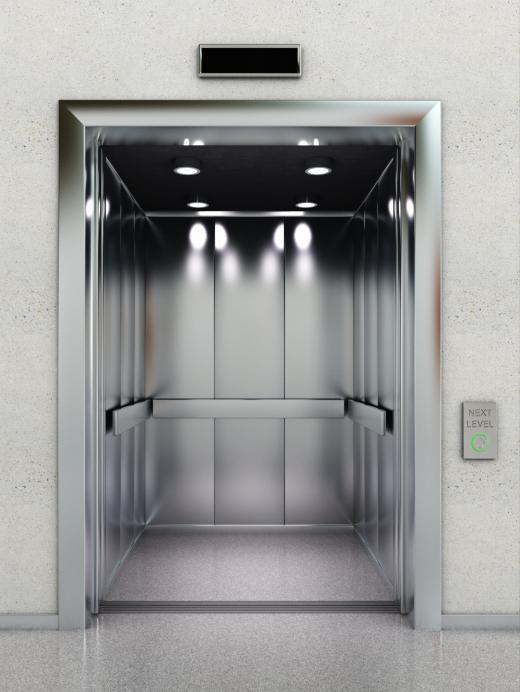The capacity of a standard elevator can vary somewhat depending on how it was built and where it is used, but in general the range is between 1,000 and 6,000 pounds (about 454 to 2,722 kg). Some of the biggest factors that influence this number are the elevator’s floor dimensions, what it’s made of, and how it is supported. Standard elevators in small residential buildings or in private residences — machines that ascend no more than four or five floors — tend to be the smallest, and as such usually have the lowest limits when it comes to weight. Lifts in taller structures and those that are designed to bring people and materials up skyscrapers are usually built differently and can typically sustain much more as a result. Freight elevators tend to have the most robust capacities. Engineers usually determine the upper limits based on calculations related to the resistance and pull of the system as a whole, and following these limits is very important to overall safety. Overloaded elevators can lose control and function improperly, which can lead to accidents and potentially serious injuries.
How Limits are Calculated

Weight limits in moving machines like elevators are typically calculated based on a number of different factors. First is the weight of the machine itself; how it is hoisted, which is to say whether it’s using hydraulic lifts, cables, or other machinations, also makes a difference, as does what it’s made of. The stronger the elevator the more it can usually hold, but only to an extent. A very heavy chamber made with reinforced steel or lined with granite can usually hold less since it weighs so much empty. In most cases, the upper weight limits represent the most the chamber can weight at all, passengers and fixed material together, in order to operate in a safe and consistent way.
Differences Based on Building Style

Generally speaking, a standard elevator in a low-rise building can hold anywhere from 2,000 to 2,500 lbs (907 to 1,134 kg). The larger the building, the more capacity it will normally have. In a mid-rise building, for instance, elevators can usually hold more like 3,000 or 4,000 lbs (1,361 - 1,814 kg), and in high-rise buildings, the limit is usually closer to 4,000 lbs. Most of this has to do with the strength and integrity of the machinery needed to life the chamber up high for sustained periods of time. There is naturally more reinforcement in a shaft that ascends 30 floors than in one that hits just 3, for instance.
Why Weight Limits Matter

Statistically, a standard elevator is relatively safe. These machines are supported by steel cables and, even in small structures, these cables alone can usually support a fully loaded elevator car. Cable failure can happen, but they aren’t likely. Falls related to cable failure are more common when the cables are weakened or cut by some force unrelated to internal weight, as happened in 1945 when the cables supporting an elevator in the Empire State Building were severed by bomber airplane.
This is not to say that loading an elevator beyond its capacity doesn’t come with dangers of its own. When the weight load is too much for the system to hold, there are often numerous problems even if the cables technically hold. Doors may not close properly, for instance, as was the case in a 2006 accident at Ohio State University, when an overloaded passenger elevator in a dorm fell between floors and a student was pinned between the building and the machine and ultimately died. The elevator in question was a passenger traction model, and assuming an average weight of 150 lbs (68kg) per student, the elevator may have been nearly 50 percent over its 2,500 lb (1,134 kg) capacity. Investigators blamed the accident on this excess weight.
Safety Regulation and Oversight
Most governments and local authorities have established regulatory bodies to help prevent elevator accidents. Requirements vary from place to place, but routine safety inspections and prominent posting of weight limits tend to be some of the most common requirements. In the United States, floor-area based standards for elevator capacities are required by the American Society of Mechanical Engineers (ASME). The ASME also stipulates the inside dimensions of an elevator car based on weight capacity and type and size of doors.
